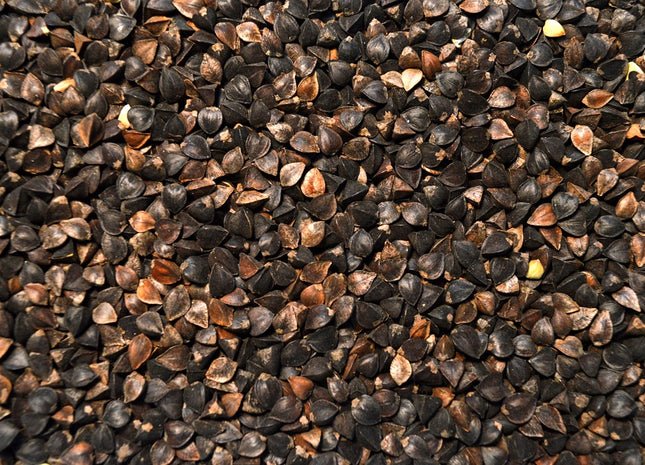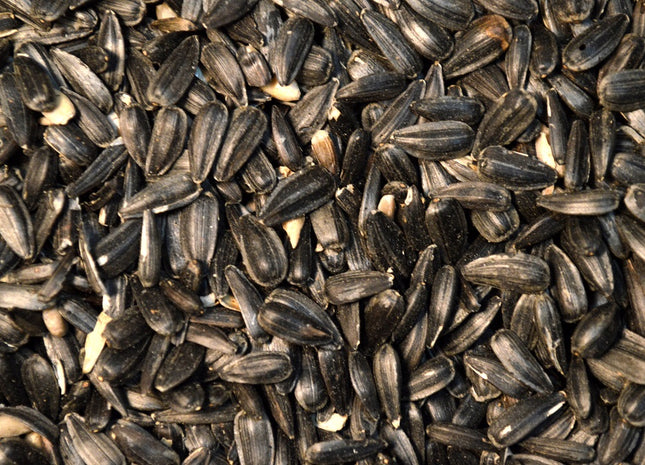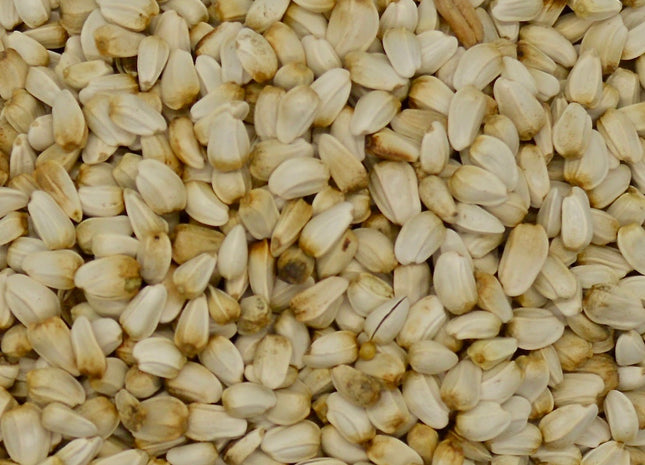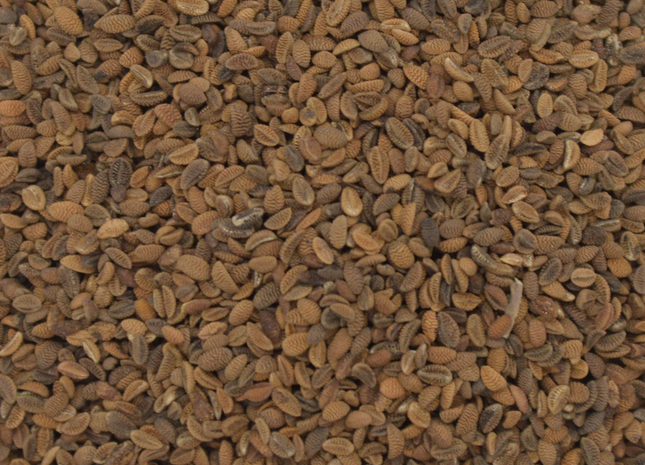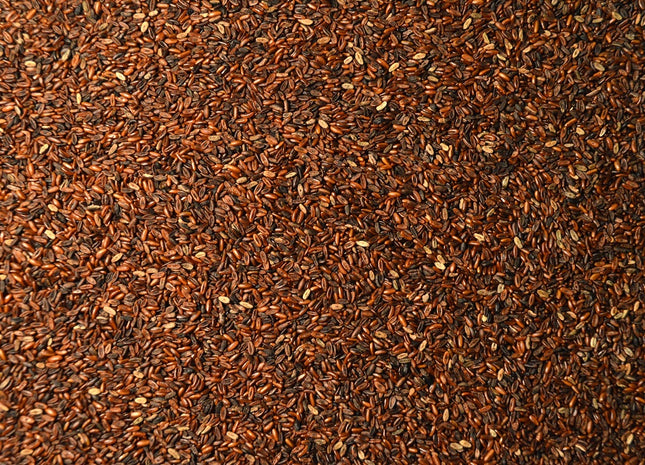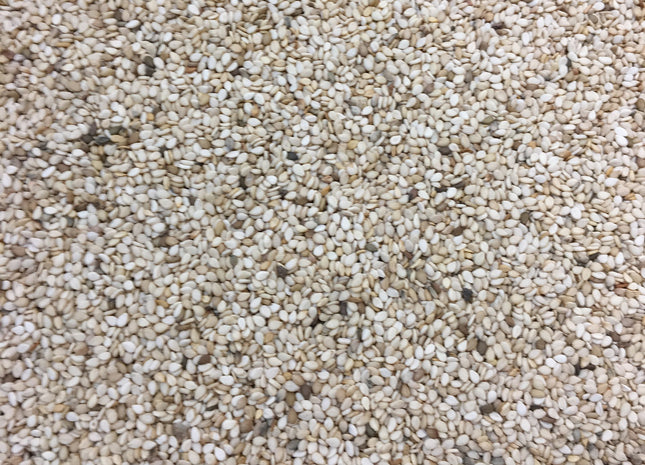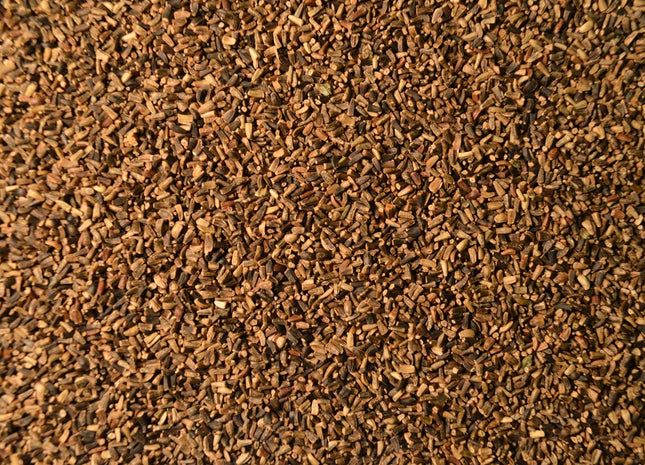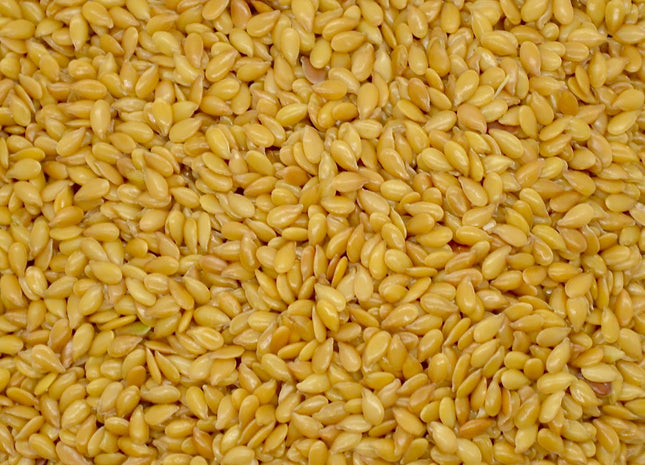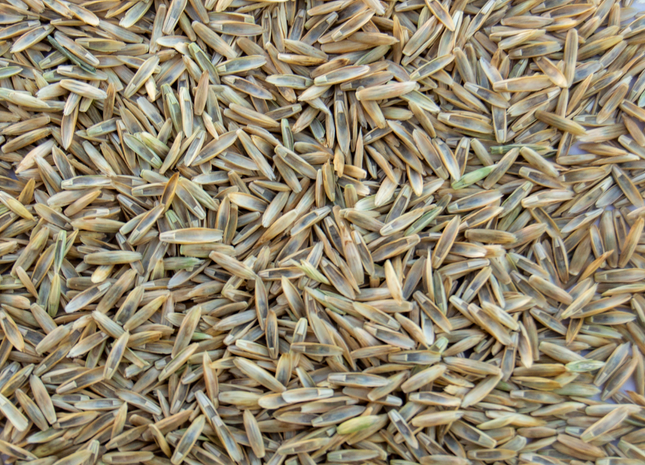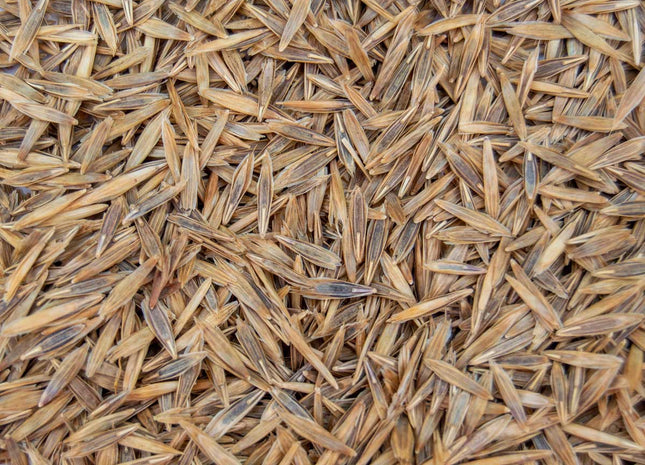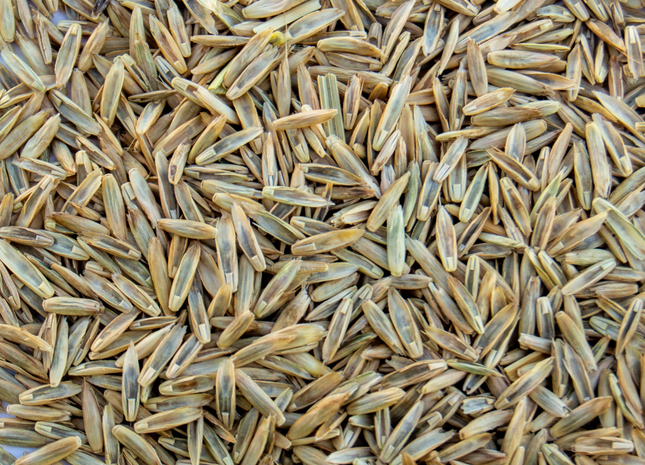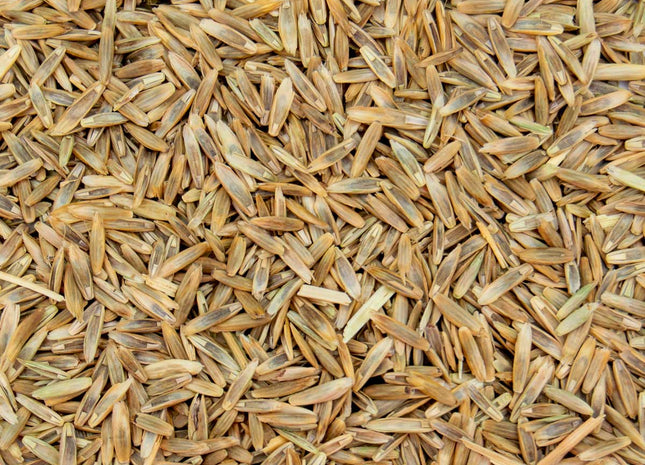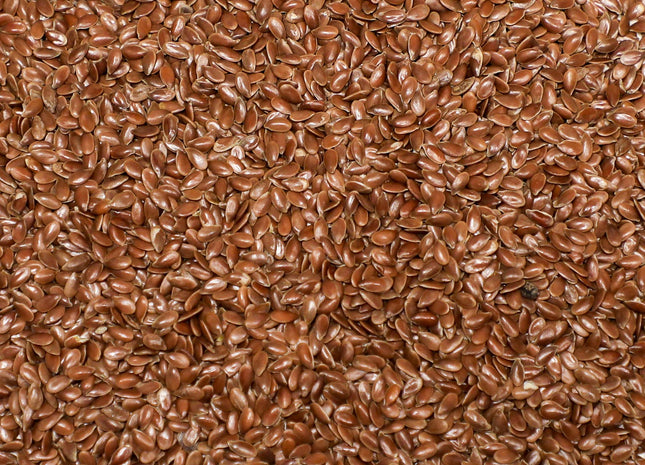Broadleaves

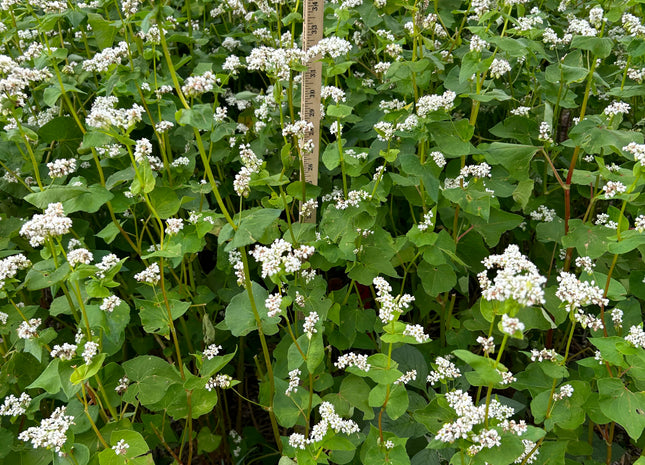
Buckwheat (Mancan)
Buckwheat is a fast establishing broadleaf that works great as a warm season cover crop. Buckwheat is also known for being a phosphorus scavenger. This means it can take up phosphorus more efficiently than other plants. Being a short season plant with 45-60 day maturity, it can produce viable seed throughout the growing season. This reseeding ability helps it suppress weeds. Additionally, buckwheat is fast to flower, making it a great species for pollinators. Buckwheat can be a great addition to grazing mixes as well.
from $1.05 per lb

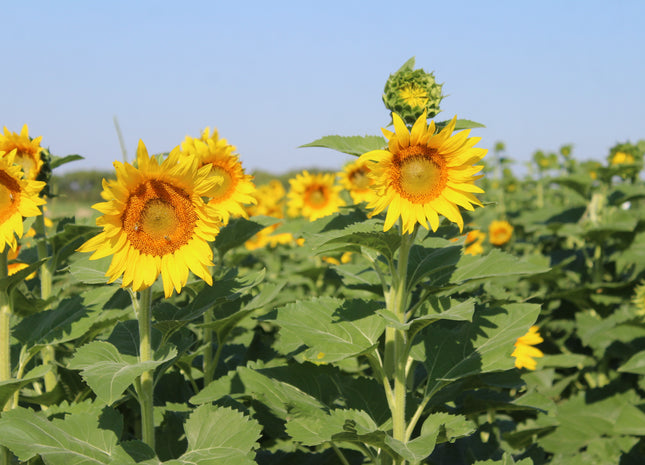
Sunflower (Black Oil)
Sunflower is renowned for its extensive and prolific root system and its ability to soak up residual nutrients. Sunflowers work very well in cover crop mixtures. With rapid early season establishment, additional covers under the canopy that normally don’t grow under cool conditions can begin to take advantage of warmer and favorable weather when sunflowers are growing slower. With upright growth and anchored plants in the soil, surrounding vining plants can support their own growth by working their way up to reach sunlight thereby providing the structure they need to grow. Because sunflowers can add significant biomass production in a short growing season, they can also serve as additional forage or silage for livestock feed. Insects are attracted to the bright colors of sunflower heads, pollinators and beneficials such as bees, damsel bugs, lacewings, hoverflies, minute pirate bugs, and non-stinging parasitoid wasps are often found in fields of sunflower and in following crops.
from $0.90 per lb

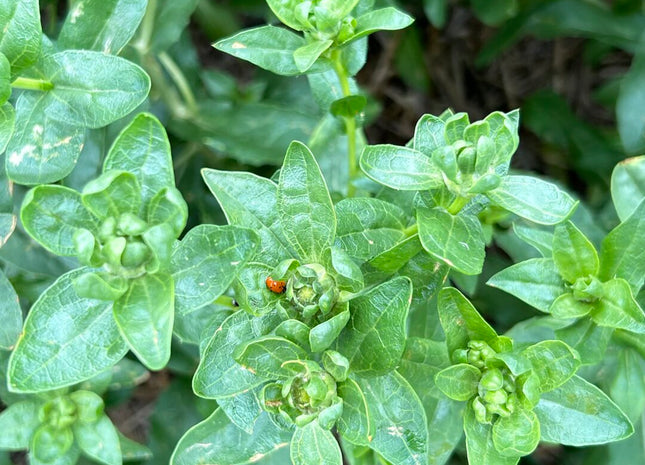
Safflower (Baldy)
Safflower is a drought tolerant, warm season broadleaf that provides excellent forage for livestock. Most varieties or safflower become prickly with maturity, rendering the plants unpalatable for livestock, but Baldy Safflower is a spineless variety developed specifically for grazing and cover crops. Baldy can be handled with bare hands even at maturity and is palatable for livestock grazing. In addition to it's grazing capabilities, safflower is exceptional at breaking hard pans, encouraging water and air movement into the soil profile, as well as scavenging nutrients from depths unavailable to most agronomic crops. It's impressive taproot which has been observed to grow 8-10 feet in ideal conditions. Green Cover Seed owns the exclusive marketing rights for Baldy spineless safflower.
from $0.85 per lb

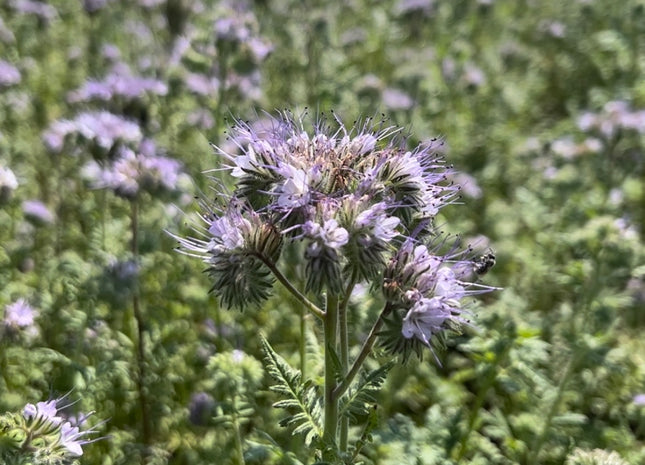
Phacelia
Phacelia enhances just about any type of cover crop mix you could think of. From pollinator mixes, to soil building, to grazing, phacelia shines in many situations. This mighty broadleaf enhances soil nitrogen uptake, boosts soil organic matter, and can be used in low fertility environments. While forage yield is modest, it is palatable to livestock even at maturity. As a cool season plant, phacelia is best planted in early spring or late summer, similar to alfalfa. This plant is also known to scavenge potassium.
from $4.35 per lb

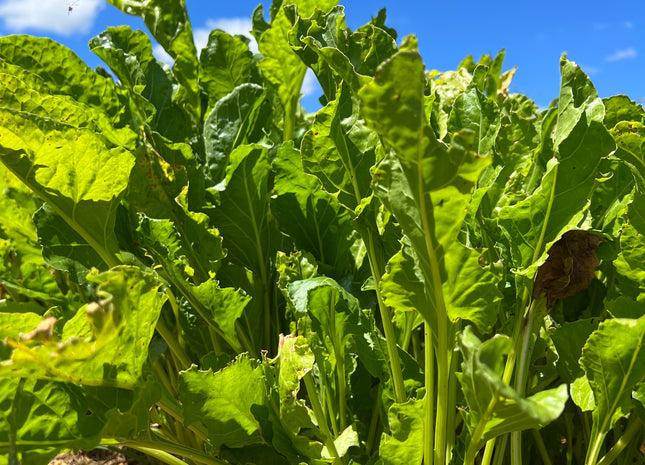
Sugar Beets Non-GMO
Sugar beets, a versatile broadleaf plant, bring a deep taproot and ample frost resistance to your cover crop arsenal. Their robust taproots can penetrate stubborn hardpans, with the majority of root growth hidden beneath the surface. These carbohydrate packed plants are a preferred choice for both wildlife and livestock. When grazed early, they display remarkable regrowth potential.
from $4.05 per lb
- Out of Stock

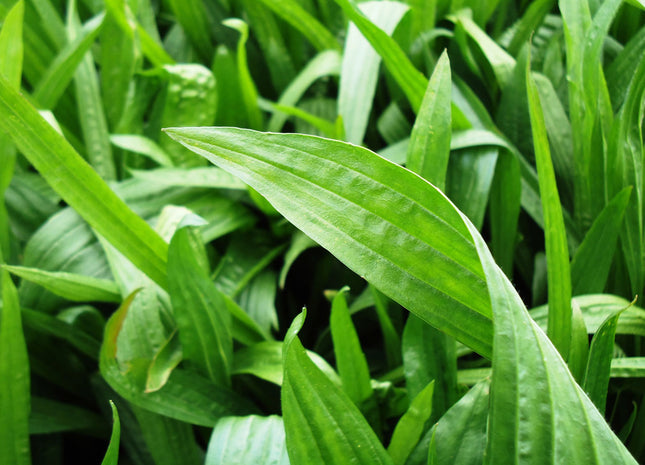
Plantain (Boston)
Plantain is a low-growing forb that, like chicory, is high in minerals. It also contains a natural antibiotic compound that helps reduce infections and also modifies rumen fermentation to improve animal performance, similar to an ionophore like Rumensin. It grows very well on compacted soils and helps loosen them.
from $5.00 per lb

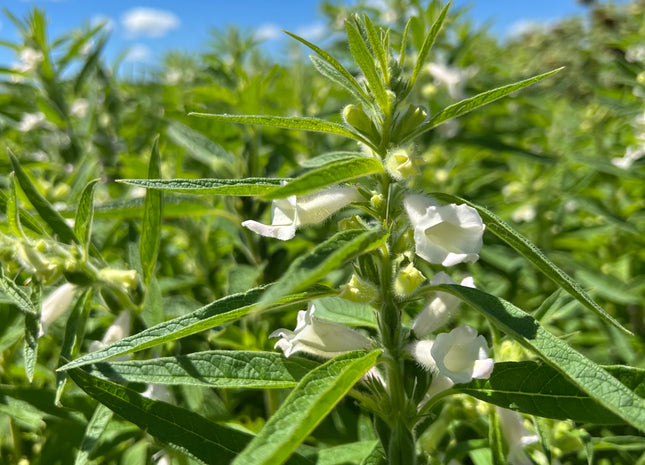
Sesame
Sesame is a warm season broadleaf that is normally grown for the oil content of the seed. It is one of the oldest cultivated plants and has been grown by people for over 4,000 years. Sesame loves hot weather and can grow with very limited water as well as being fairly tolerant of low pH soils. Sesame can grow 5-6 feet tall and will put on bell-shaped, white and purple flowers late in the season which makes it a great addition to a full season pollinator mix. Sesame has little to no forage value as livestock will not graze it, but it can still be a good addition to a grazing mix as left over residue.
from $2.15 per lb

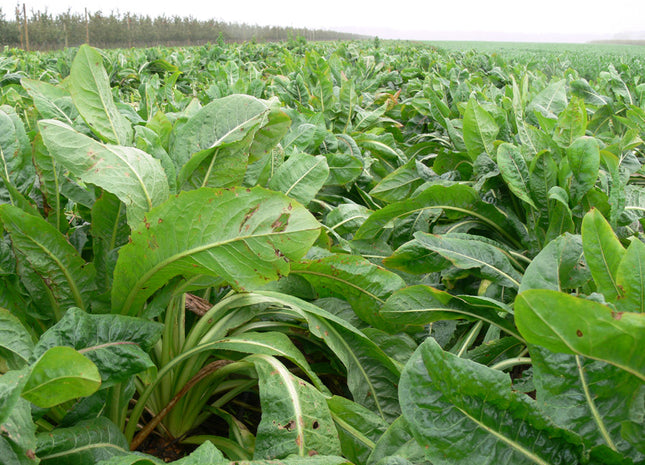
Chicory (Endure)
Chicory is a deep rooted forb that goes great in many perennial pasture mixes. Because of its ability to reach many minerals in the soil, this is a highly nutritious grazing plant especially before it blooms with blue flowers. Chicory has natural deworming abilities adding to its benefits in perennial grazing systems where it should be seeded at a low rate for cattle but can be increased for sheep or other small ruminants.
from $5.00 per lb


Organic Mancan Buckwheat
Note: This product is certified organic. Buckwheat is a fast establishing broadleaf that works great as a warm season cover crop. Buckwheat is also known for being a phosphorus scavenger. This means it can take up phosphorus more efficiently than other plants. Being a short season plant with 45-60 day maturity, it can produce viable seed throughout the growing season. This reseeding ability helps it suppress weeds. Additionally, buckwheat is fast to flower, making it a great species for pollinators. Buckwheat can be a great addition to grazing mixes as well.
from $1.20 per lb

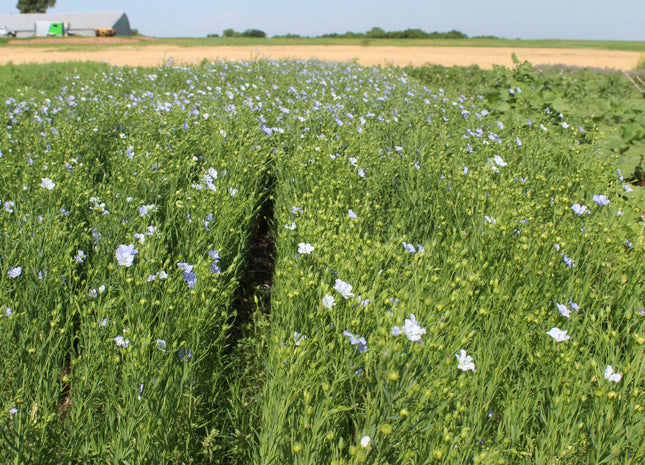
Flax (Golden)
Flax works well as a cover crop in many small grain and corn rotations. The overall nutrient demand for flax is low and very little nitrogen is needed. Because flax is a broadleaf species, most diseases associated with it will not transfer over and cause infection to corn, soybeans, or wheat with the exception of powdery mildew and rhizoctonia after legumes. Flax can be utilized as a green manure if terminated early enough but take caution if attempting to cut too late as lignin/cellulose content increase with maturity and would hamper decomposition. Pollinators are attracted to the various blue/purple colors of the flowers that can last for 2-4 weeks.
from $1.73 per lb

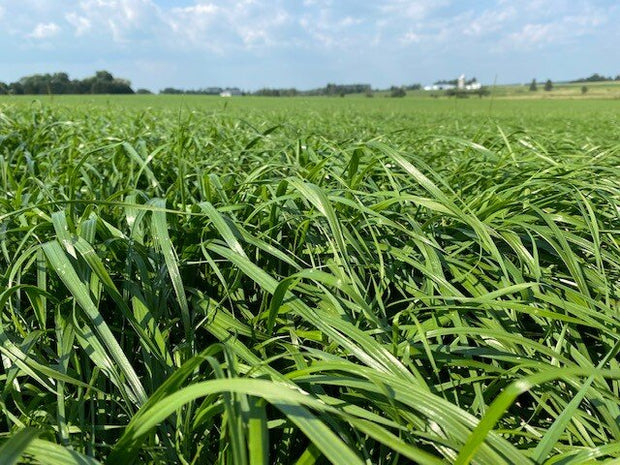
Perennial Ryegrass (Remington PLUS NE2 Endophyte)
Perennial Ryegrass is an extremely palatable cool season perennial forage source. While most perennial ryegrass lacks drought and heat tolerance, RemingtonPLUS, boasts improved ability to survive in hot and dry climates. The friendly endophyte associated with this ryegrass allows increased heat and drought tolerance. Perennial ryegrass is excellent quality forage and is a great option for grass finished livestock operations.
from $3.80 per lb

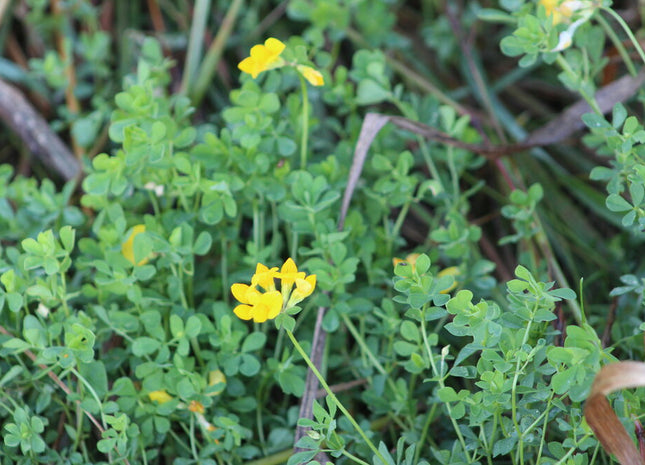
Birdsfoot Trefoil (VNS) - OMRI Inoculated
Birdsfoot Trefoil is a long lived perennial legume. This plant contains high levels of tannins, making it an excellent addition to pastures for grazing as there is no bloat risk that is common with other pasture legumes. The tannins also help neutralize the impact of grazing endophyte infected fescue. Birdsfoot Trefoil is not as productive when compared to alfalfa and is most commonly used in mixtures with other plants.
from $7.40 per lb

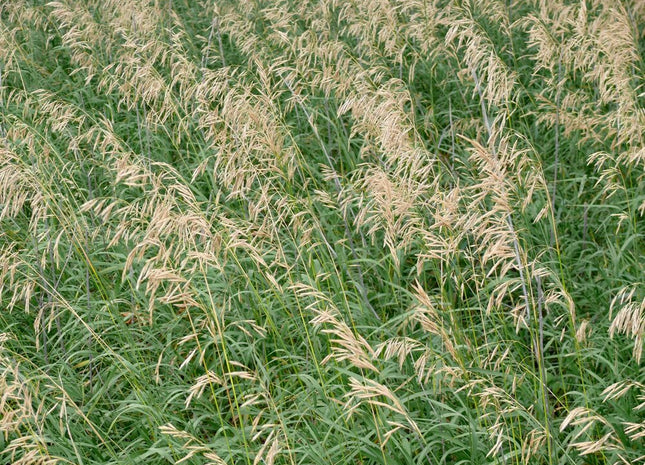
Smooth Bromegrass
Smooth brome is a productive, cool season grass with good drought tolerance. It has decent palatability, though it is best grazed in a vegetative state. Smooth bromegrass is very aggressive, establishing quickly for a perennial and spreads through rhizomes, making a dense sod. This means it is great for waterways and holding soil on slopes but it can also dominate and even choke out other perennial species. For that reason, it should be used sparingly in pasture mixes, relying on other species which are more palatable and offer better regrowth, but using smooth brome to fill in.
from $3.60 per lb

Italian Ryegrass (Tetlia/Tetra Prime)
Italian ryegrass is an excellent option for grazing. This high quality forage withstands close grazing which allows for total forage utilization. Italian ryegrass is generally considered a biennial, so it remains vegetative in its first year of growth and will not produce seed until its second year of growth. The Tetra Prime variety has improved winter hardiness along with excellent drought tolerance.
from $1.90 per lb

Intermediate Ryegrass (TetraMag)
TetraMag intermediate ryegrass offers high forage tonnage with great feed value. This variety offers great tolerance. Use as a standalone grazing or haying forage, or utilize in addition with alfalfa or clover to offer a diverse feed for livestock. Planting can be done with a drill or broadcast as long as good seed to soil contact is achieved.
from $2.05 per lb
- Out of Stock


Organic Brown Flax
Note: This product is certified organic. Flax works well as a cover crop in many small grain and corn rotations. The overall nutrient demand for flax is low and very little nitrogen is needed. Because flax is a broadleaf species, most diseases associated with it will not transfer over and cause infection to corn, soybeans, or wheat with the exception of powdery mildew and rhizoctonia after legumes. Flax can be utilized as a green manure if terminated early enough but take caution if attempting to cut too late as lignin/cellulose content increase with maturity and would hamper decomposition. Pollinators are attracted to the various blue/purple colors of the flowers that can last for 2-4 weeks.
from $1.92 per lb

